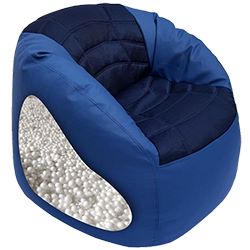
Discover the versatility and sustainability of EPS bead in our comprehensive guide. Explore their properties, applications, and benefits in packaging, construction, and more. From thermal insulation to shock absorption, learn how EPS beads are revolutionizing industries.
Introduction:
In the world of construction and packaging, EPS beads have become a widely used and highly versatile material. EPS, which stands for Expanded Polystyrene, is a lightweight, rigid, and cellular plastic that consists of small spherical beads. These EPS beads have revolutionized various industries due to their exceptional properties, cost-effectiveness, and sustainability. In this comprehensive guide, we will delve into the world of EPS beads, exploring their properties, applications, and the numerous benefits they offer.
Section 1: Understanding EPS Bead
1.1 What are EPS Bead?
Manufacturers produce EPS bead by expanding and moulding the polystyrene resin using steam and pressure. This process creates tiny spherical particles made from expanded polystyrene resin, resulting in lightweight and versatile beads.
1.2 Properties of EPS Bead:
Lightweight: EPS beads are extremely lightweight, making them easy to handle and transport.
Thermal Insulation: EPS beads have excellent thermal insulation properties, minimizing heat transfer and improving energy efficiency.
Shock Absorption: These beads provide exceptional cushioning and shock absorption capabilities, making them ideal for packaging fragile items.
Buoyancy: EPS beads are buoyant and can be used in applications requiring flotation.
Moisture Resistance: EPS beads are resistant to moisture, ensuring their stability and performance in various environments.
Chemical Resistance: EPS beads exhibit resistance to most chemicals, enhancing their durability and versatility.
Section 2: Applications of EPS Bead
2.1 Packaging Industry:
The packaging industry extensively utilizes EPS beads for their exceptional cushioning properties. They commonly employ EPS beads to package delicate and fragile items like electronics, appliances, glassware, and artwork. The beads provide excellent protection against impact and vibration during transportation and storage.
2.2 Construction Industry:
EPS beads have found widespread applications in the construction industry. Some of the key uses include:
Insulation: EPS beads are used as insulation material in walls, roofs, and floors to improve thermal efficiency and reduce energy consumption.
Lightweight Fill: EPS beads are employed as lightweight fill material in applications such as road construction, embankments, and void filling.
Concrete Additive: When mixed with concrete, EPS beads enhance its properties, such as reducing its weight, improving thermal insulation, and increasing its workability.
2.3 Geofoam:
Geofoam applications utilize EPS bead, employing them as lightweight fill material for soil stabilization, slope protection, and reducing lateral pressures in underground structures.
2.4 Art and Craft:
EPS beads are popular in art and craft projects as a versatile material for creating sculptures, props, and 3D models. Their lightweight nature and ease of shaping make them ideal for artistic applications.
Section 3: Environmental Sustainability EPS bead
3.1 Recyclability:
EPS beads are recyclable, contributing to a circular economy. You can melt and reprocess them into new EPS products or utilize them as raw materials for other plastic products.
3.2 Energy Efficiency:
The thermal insulation properties of EPS beads contribute to energy efficiency by reducing heat loss and improving the overall thermal performance of buildings.
3.3 Reduced Waste:
EPS beads generate minimal waste during production, as excess beads can be collected and reused. Additionally, their lightweight nature results in reduced transportation emissions.
Conclusion:
EPS bead have become an indispensable material in various industries due to their exceptional properties, versatility, and sustainability. From packaging fragile items to insulating buildings and supporting construction projects, EPS beads offer numerous benefits. Their lightweight nature, thermal insulation capabilities, shock absorption, and recyclability make them an ideal choice for a wide range of applications. As industries continue to seek innovative and sustainable solutions, EPS beads will undoubtedly play a crucial role in shaping the future of packaging, construction, and beyond.
